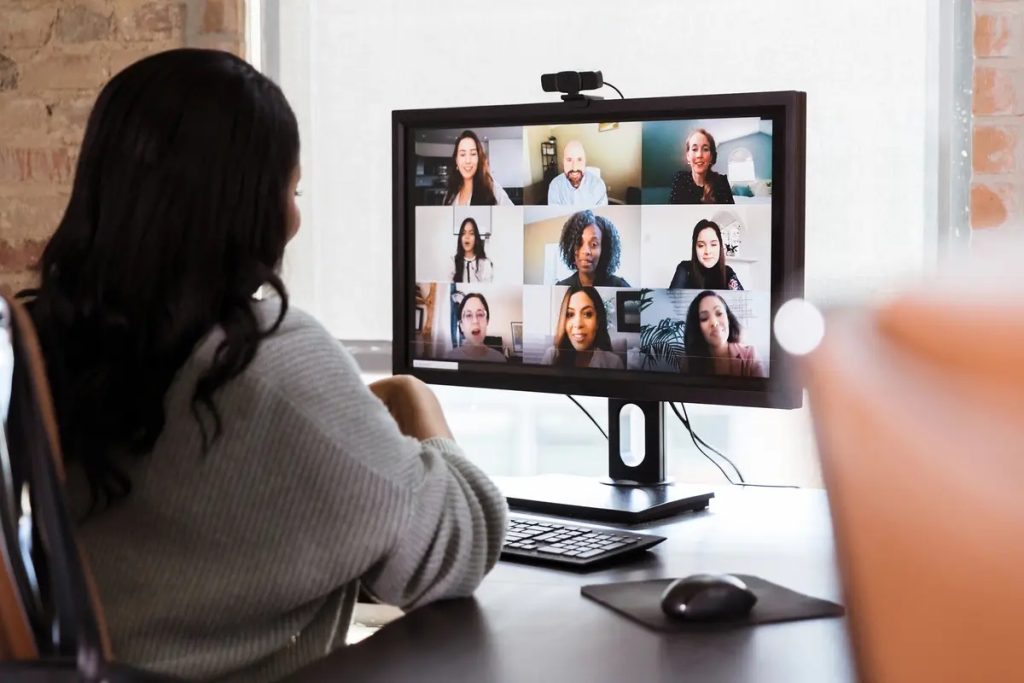The use of video meeting systems has increased by over 3500% in the past five years, particularly in the post-COVID era. Despite their growing prevalence, users are still confronted with several challenges, including reduced engagement, accountability, trust and productivity (Morrison-Smith & Ruiz, 2020). Nevertheless, newly formed teams often start their collaboration virtually, which can significantly influence future team cooperation and coordination.
Given that communication can positively affect behavior and decision-making (e.g., Charness & Dufwenberg, 2006; He et al., 2017), the impact of different virtual communication channels has been studied extensively (e.g., Brosig & Weimann, 2003; Grözinger et al., 2020; Zylbersztejn et al., 2020). Video meetings are frequently the preferred choice among employers, as they most closely replicate face-to-face interactions. However, existing evidence suggests that video communication may not necessarily outperform other channels (Nieken et al., 2023; Hörrmann et al., 2025).
There are a few key distinctions between video and face-to-face meetings. One is the absence of social gaze in video meetings (Nieken & Reuscher, 2025), another the default self-view feature in video conferencing platforms. This self-view has been shown to increase cognitive load and divert attention away from other participants (Seitz et al., 2024). Since both social identity (Chen & Chen, 2011) and group cohesion (Gächter et al., 2024) have been identified to be crucial to enhance team cooperation, adapting this meeting system design feature could therefore affect cooperation and coordination.
We plan to conduct a controlled online experiment with two main stages: a virtual communication stage and a team collaboration stage. In the communication stage, we aim to vary self-focused attention as well as cognitive load with our treatment conditions. The treatments' impact on coordination and cooperation is measured in the second stage, in which the teams play a standard economic game (Brandts & Cooper, 2006).
The findings from this study aim to contribute to the growing literature on virtual collaboration and help design hybrid adaptive video meeting systems that intelligently adjust their behavior or configuration based on real-time feedback from both the environment and user inputs (Benke et al., 2024).
References
Benke, I., Knierim, M., Adam, M., Beigl, M., Dorner, V., Ebner-Priemer, U., … & Weinhardt, C. (2024). Hybrid Adaptive Systems, Business & Information Systems Engineering, 66(2), 233-247.
Brandts, J. & Cooper, D. J. (2006a). A Change Would Do You Good .... An Experimental Study on How to Overcome Coordination Failure in Organizations, American Economic Review, 96, 669–693.
Brosig, J. & Weimann, J. (2003). The Effect of Communication Media on Cooperation, German Economic Review, 4, 217–241.
Charness, G. & Dufwenberg, M. (2006). Promises and partnership, Econometrica, 74, 1579–1601.
Chen, R. & Chen, Y. (2011). The Potential of Social Identity for Equilibrium Selection, American Economic Review, 101, 2562–2589.
Gächter, S., Starmer, C. & Tufano, F. (2024). Measuring “Group Cohesion” to Reveal the Power of Social Relationships in Team Production, The Review of Economics and Statistics, 1–16.
Grözinger, N., Irlenbusch, B., Laske, K. & Schröder, M. (2020). Innovation and communication media in virtual teams–An experimental study, Journal of Economic Behavior & Organization, 180, 201–218.
He, S., Offerman, T., & Van De Ven, J. (2017). The sources of the communication gap, Management Science, 63, 2832–2846.
Hörrmann, M., Nieken, P., & Walther, S. (2025). Beyond Words: Non-verbal cues in virtual collaborations. Working Paper.
Morrison-Smith, S., & Ruiz, J. (2020). Challenges and barriers in virtual teams: a literature review, SN Applied Sciences, 2(6), 1-33.
Nieken, P. (2023). Charisma in the gig economy: The impact of digital leadership and communication channels on performance, The Leadership Quarterly, 34, 101631.
Nieken, P. & Reuscher, T. F. (2025). Social Gaze, Cooperation, and Team Cohesion: A Multiparty Eye-Tracking Study. Working Paper.
Seitz, J., Benke, I., & Maedche, A. (2024). Mirror, mirror in the call": Exploring the Ambivalent Nature of the Self-view in Video Meeting Systems with Self-Reported & Eye-Tracking Data, Proc. ACM Hum.-Comput. Interact. 8, CSCW2, Article 392.
Zylbersztejn, A., Babutsidze, Z., & Hanaki, N. (2020). Preferences for observable information in a strategic setting: An experiment, Journal of Economic Behavior & Organization, 170, 268–285.

